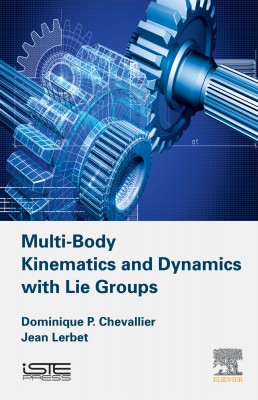
The book explores the use of Lie groups in the kinematics and dynamics of rigid body systems.
The first chapter reveals the formal properties of Lie groups on the examples of rotation and Euclidean displacement groups. Chapters 2 and 3 show the specific algebraic properties of the displacement group, explaining why dual numbers play a role in kinematics (in the so-called screw theory). Chapters 4 to 7 make use of those mathematical tools to expound the kinematics of rigid body systems and in particular the kinematics of open and closed kinematical chains. A complete classification of their singularities demonstrates the efficiency of the method.
Dynamics of multibody systems leads to very big computations. Chapter 8 shows how Lie groups make it possible to put them in the most compact possible form, useful for the design of software, and expands the example of tree-structured systems.
This book is accessible to all interested readers as no previous knowledge of the general theory is required.
1. The Displacement Group as a Lie Group.
2. Dual Numbers and “Dual Vectors” ?in Kinematics.
3. The “Transference Principle”.
4. Kinematics of a Rigid Body and Rigid Body Systems.
5. Kinematics of Open Chains, Singularities.
6. Closed Kinematic Chains: Mechanisms ?Theory.
7. Dynamics.
8. Dynamics of Rigid Body Systems.
Dominique P. Chevallier is Emeritus Research Director at Navier Laboratory, Ecole Nationale des Ponts et Chaussées in France. His research interests are the mathematical methods of mechanics.
Jean Lerbet is Professor at the Universities of Evry and Paris Saclay in France. His research interests include differential geometry and mechanics, and stability.